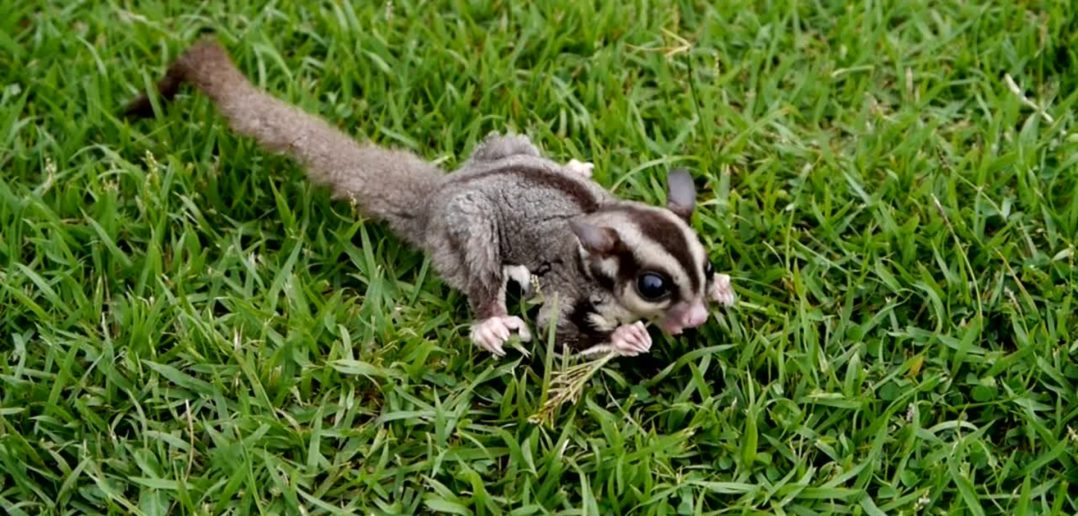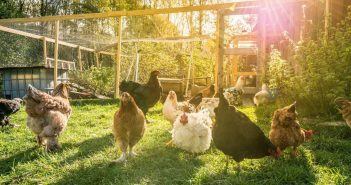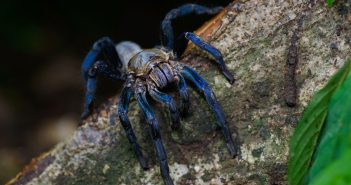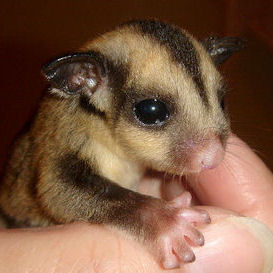
Sugar gliders are adorable, social, and energetic little marsupials that have gained popularity as exotic pets. However, they have specific dietary needs that must be met to keep them healthy and happy.
Proper nutrition is one of the most critical aspects of sugar glider care, and feeding them an unbalanced diet can lead to serious health problems.
If you’re still deciding whether one of these little pocket pets is the right pet for you, be sure to check out our guide: Do Sugar Gliders Make Good Pets?
What Do Sugar Gliders Eat in the Wild?
In the wild, sugar gliders eat a wide variety of foods and their digestive systems have adapted to this. Active little omnivores (animals that eat both plant and animal proteins), these adorable marsupials require a diet that is not only high energy, but is also very high in protein.
Sugar gliders are omnivores, meaning they eat both plant-based and animal-based foods. In the wild, their diet includes:
- Tree sap & nectar – A primary source of carbohydrates
- Fruits & vegetables – Such as figs, berries, and leafy greens
- Insects & small vertebrates – Providing protein and calcium
- Pollen & flowers – Offering additional nutrients
Since their natural diet is highly varied, replicating this in captivity is crucial to avoid nutritional deficiencies.
The Ideal Sugar Glider Diet
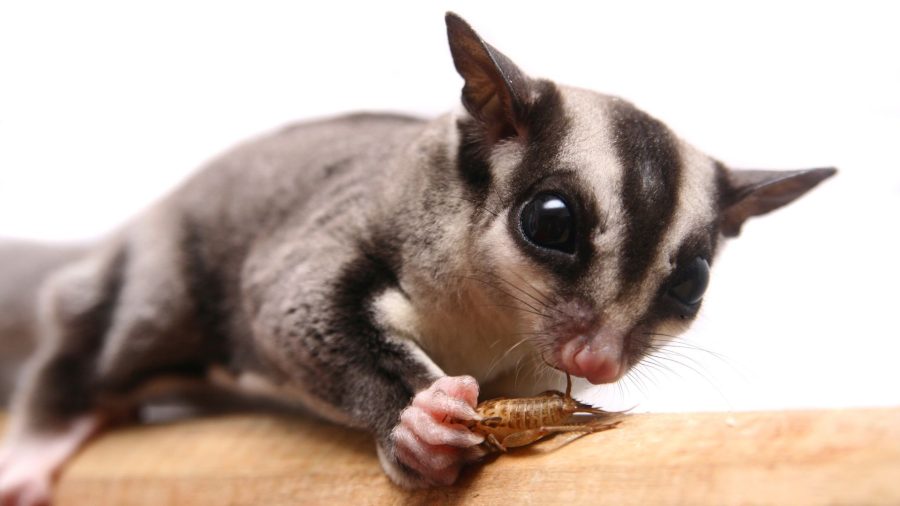
40% Protein – Insects (gut-loaded mealworms, crickets), boiled eggs, or high-protein glider pellets
20-30% Fruits – Berries, apples, melons (avoid citrus)
40% Vegetables – Broccoli, sweet potatoes, carrots, snap peas
15% Carbohydrates – Small amounts of honey, yogurt, or formulated nectar replacements
Calcium & Vitamin Supplements – Essential to prevent hind leg paralysis and metabolic bone disease
Most fruits are good for sugar gliders, with the exception of citrus, which can cause diarrhea, and bananas, which most sugar gliders seem to dislike. Figs are a wonderful fruit for them, high in protein, although they can become pricey when out of season. Another good protein source is to add hard boiled egg to your glider’s meal.
Fruits
- Apples
- Berries (strawberries, blueberries, raspberries)
- Melons
- Grapes (cut into small pieces)
- Figs (great protein source but can be expensive)
Vegetables
- Broccoli
- Sweet potatoes
- Carrots
- Sugar snap peas
- Corn (in moderation)
Protein Sources
- Hard-boiled eggs
- Cooked lean chicken (plain, no seasoning)
- Live or freeze-dried insects (mealworms, crickets)
- Monkey biscuits (high-protein alternative)
A great way to increase protein and calcium intake is using the “shake and bake” insects:
- Place mealworms or crickets in a plastic bag
- Add calcium & vitamin powder
- Shake to coat them thoroughly
- Feed as a treat or mix into meals
Preventing Picky Eating Habits
Sugar gliders can become very selective eaters and, given the opportunity, may develop a very picky palate . . . choosing only their favorite treats instead of consuming a balanced diet. While we often think of this as a cute, human-like trait, it can lead to serious nutritional deficiencies for our velvety little friends.
- Use the “blender method” – Mix all ingredients together, ensuring your glider gets a balanced meal. Extra portions can be frozen for later use.
- Meal Rotation – Assign different food groups to different days (e.g., Mondays for vegetables, Tuesdays for protein-based meals).
- Limit Treats – Too many sugary treats can cause imbalances in their diet.
Variety is the key to healthy sugar glider nutrition, as it is for almost all animals and it is often a good idea to either blend your sugar glider’s foods, to ensure that she gets a good balanced meal, or to resort to certain meals on certain days of the week (ie: Mondays are vegetable day).
Quite often, the blender method is the best route to take because, not only does it allow you to mix in things that your sugar glider wouldn’t eat on his own (such as his calcium or vitamin additives), but excess, unused portions, can also be placed in a Ziplock baggie and frozen for future use.
Foods to Avoid Feeding Sugar Gliders
Avoid offering your sugar glider candies and junk food, onions or food that contains onion powder in it (these are toxic to sugar gliders and many other pets), houseplants, ferret or other animal foods that are generally too high in fats or contain things that are not healthy for little gliders. And avoid distilled water!
- Citrus fruits (can cause diarrhea)
- Bananas (most sugar gliders dislike them)
- Onions & garlic (toxic to sugar gliders)
- Chocolate, caffeine, and processed foods
- Houseplants
- Ferret / other animal foods (tend to be high in fat)
- High-fat diets (can lead to obesity and paralysis)
Also, when feeding insects to your sugar glider (or any other insectivore pets), do not catch wild insects and attempt to feed them in place of store-purchased insects. Wild insects often carry bacteria and can, quite often, have pesticides on them that can be potentially harmful to your furry little friend.
Sugar gliders should never consume foods containing artificial sweeteners like aspartame, saccharin, or sucralose, as these chemicals can be harmful to their health. While research on sugar gliders specifically is limited, studies have shown that artificial sweeteners can cause neurological issues, digestive upset, and even toxicity in small animals. Avoid giving them diet or sugar-free products, including flavored yogurts, processed treats, or anything labeled “low-fat” or “sugar-free,” as these often contain harmful substitutes. Instead, stick to natural, whole foods to keep your sugar glider happy and healthy!
Can Sugar Gliders Eat Dairy?
Yes, in small amounts. Low-fat yogurt and cottage cheese can be offered occasionally (no more than 1 tablespoon per week) as a calcium source. Sugar gliders usually seem to enjoy eating these tasty treats.
Avoid high-fat or artificially flavored yogurts!
How & When to Feed Your Sugar Glider
Offer your sugar glider his food late in the afternoon or early in the evening and remove the dish first thing in the morning. Fruits that have been left out overnight not only run the risk of collecting fruit flies, but also grow bacteria at an alarming rate; any and all uneaten portions should be thrown away and the dish should be thoroughly cleaned for use the next night!
- Offer food in the evening or late afternoon, as sugar gliders are nocturnal.
- Remove leftover food in the morning to prevent bacterial growth.
- Use a shallow, easy-to-clean dish.
- Monitor weight and adjust portions to avoid obesity.
Hydration: Fresh Water is Essential
A rather obvious part of your sugar glider’s diet, yet a part that must be mentioned, is water. As with all pets, sugar gliders should have access to clean, fresh water at all times!
Check and refill water daily to prevent dehydration. If deprived of water for more than a day, your sugar glider can quickly dehydrate and may die, so be sure to pay close attention and make sure he gets lots of fresh water to drink.
Offer both a water bottle and a small dish when first introducing them to your home to ensure they learn how to drink from a bottle. And remember, no distilled water!
Common Diet-Related Health Issues
- Metabolic Bone Disease (MBD) – Caused by calcium deficiency, leading to paralysis. Prevented with proper calcium supplements.
- Obesity – Avoid high-fat foods like excessive nuts or fatty meats.
- Digestive Issues – Caused by improper diet balance or feeding toxic foods.
However you decide to ensure your pet’s nutritional needs are met, just make sure that you do not rely upon any one type of food to feed your sugar glider. Sugar gliders that are fed an improper diet can quite often (though not always), have a strong odor about them, particularly in their urine, contributing to the belief amongst novice pet owners that these cute little marsupials “smell bad.”
Feeding a sugar glider isn’t complicated, but it can be overwhelming at first. It requires careful planning to ensure they receive all necessary nutrients. By providing a balanced diet, limiting unhealthy treats, and following proper feeding practices, your sugar glider can live a long, happy, and healthy life.
Thinking about getting a sugar glider? Be sure to check out Do Sugar Gliders Make Good Pets? before making your decision!

